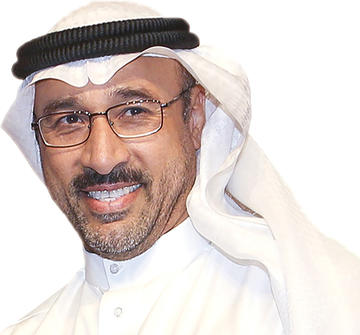Q: What are the factors that underpinned the strong performance of Kuwaiti banks in 2016, despite the headwinds in the domestic and regional economy?
A: Kuwait’s banking sector is well positioned to withstand the lower oil price-related macro shocks, though there are some downside risks. Banks are characterised by a robust financial profile and strong regulatory support. The Central Bank of Kuwait has long been a vocal champion of the country’s wider banking sector, providing banks with the support they need to prosper and remain strong in the face of testing economic conditions, and making the banking sector one of the most stable and resilient banking markets in the Middle East and North Africa region.
More from this report
Despite low oil prices and a high dependency on oil revenues across Kuwait and other Gulf Co-operation Council [GCC] countries, banks’ ratings in Kuwait continue to benefit from their governments’ willingness to tap accumulated wealth to support counter-cyclical spending. Decreased oil revenues appear to have motivated the government to diversify its gross domestic product [GDP] and boost market performance by launching a number of mega-development projects.
The gradual approach to fiscal consolidation, combined with increased capital expenditure under the development plan, will support non-oil GDP growth, credit conditions, bank profitability and internal capital generation. Banks have also enhanced their loss-absorption capacity by building up capital buffers and provisions, and supervision is strong.
Q: What steps can be taken to enhance Kuwait’s position as a hub for Islamic finance?
A: Islamic finance is growing 50% faster than the traditional banking sector, and it has huge growth potential. A quarter of the world’s population is Muslim but only 1% of the world’s financial assets are sharia-compliant.
Kuwait has a large and long-standing Islamic banking sector comprising five banks out of 10 commercial banks, and a large number of non-bank Islamic financial institutions. Islamic banks have a market share of almost 40% in terms of assets. Many of these banks have significant operations outside Kuwait, in the region and internationally.
The strong growth of the Islamic finance industry provides excellent opportunities for them to expand their business in the area due to their low-cost funding structures. These developments stem from the vision to transform Kuwait into a financial and trade hub, with a vision that Islamic finance plays an important role in this centre.
With the international Islamic finance industry worth $2000bn, and the high growth rate of Islamic finance transactions globally, Kuwait needs to do even more if it wants to reap all the benefits of Islamic finance. Reviewing and updating legislations for Islamic banking in Kuwait is important to enable local Islamic banks to provide the products and instruments appropriate to the nature of this business.
Q: What kind of growth opportunities will Kuwait’s public-private partnership [PPP] market offer Kuwait’s banks moving forward?
A: To avoid falling into the trap of economic stagnation because the Kuwait economy depends on government expenditure, the government plans to forge ahead with infrastructure projects despite the oil price drop.
Among the recent important developments that followed the fall in oil prices is the government’s emphasis on the enhancing of the private sector. Lately, the government presented its vision for economic reform to expand the non-oil sector, including expanding the partnership between the public and private sector to help finance some of these projects.
For the past two years, Kuwait has been among the largest GCC project markets and currently there are many mega-projects waiting to be implemented here under the PPP system. It is expected that the biggest part of the total cost of these projects will funded by borrowing.
Q: What are your expectations for Kuwait’s economic growth over the next two years?
Economic growth has been resilient despite the lower oil price environment. It is expected that Kuwait’s fiscal and external positions will remain strong, backed by a significant stock of financial assets. It is expected that these strengths will offset risks related to the current low oil price, Kuwait’s undiversified oil economy, and what we assess as its relatively nascent parliamentary system, in addition to geopolitical tensions in the region.
Under the 2015-19 development plan, the government has accelerated efforts to implement major projects, including modernisation of existing refineries, a new refinery and major transport projects. Overall GDP growth is expected to rise to between 3% and 4% in the next two years. In addition to accelerating non-oil activity, non-oil growth is expected to pick up slightly in the next two years, driven by public investment and a steady consumer sector.












